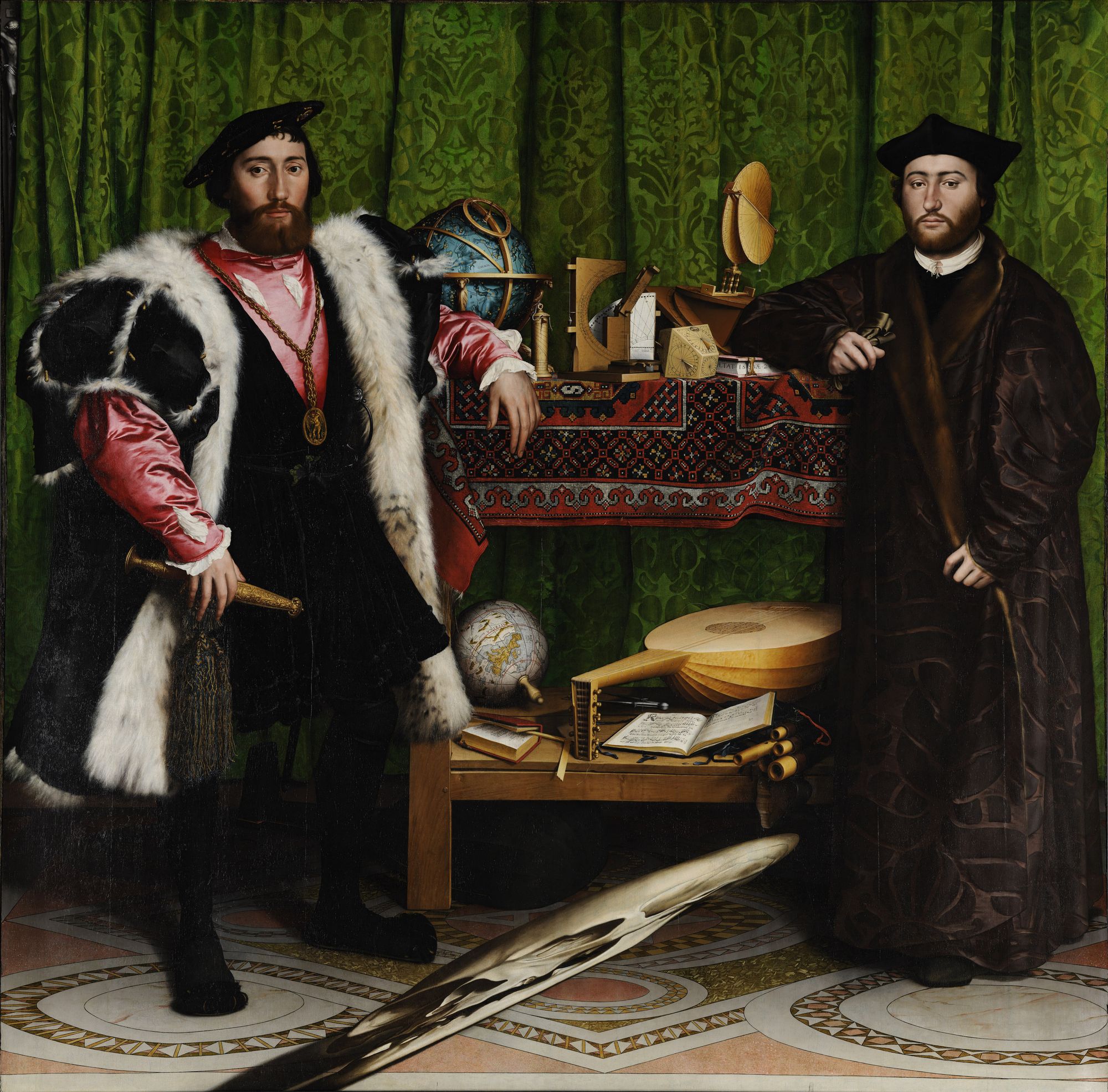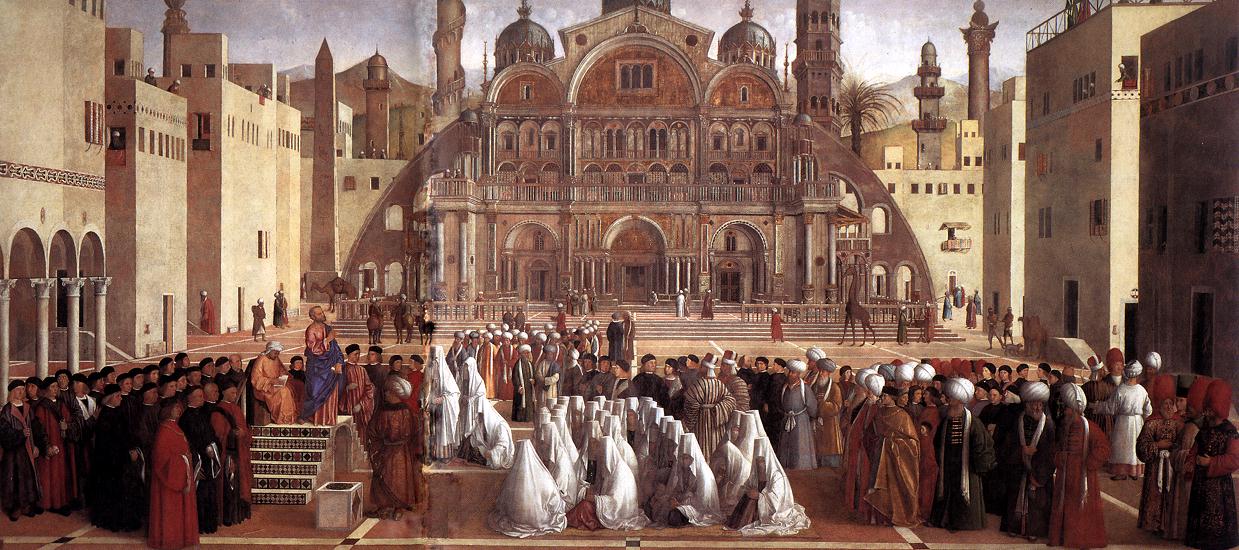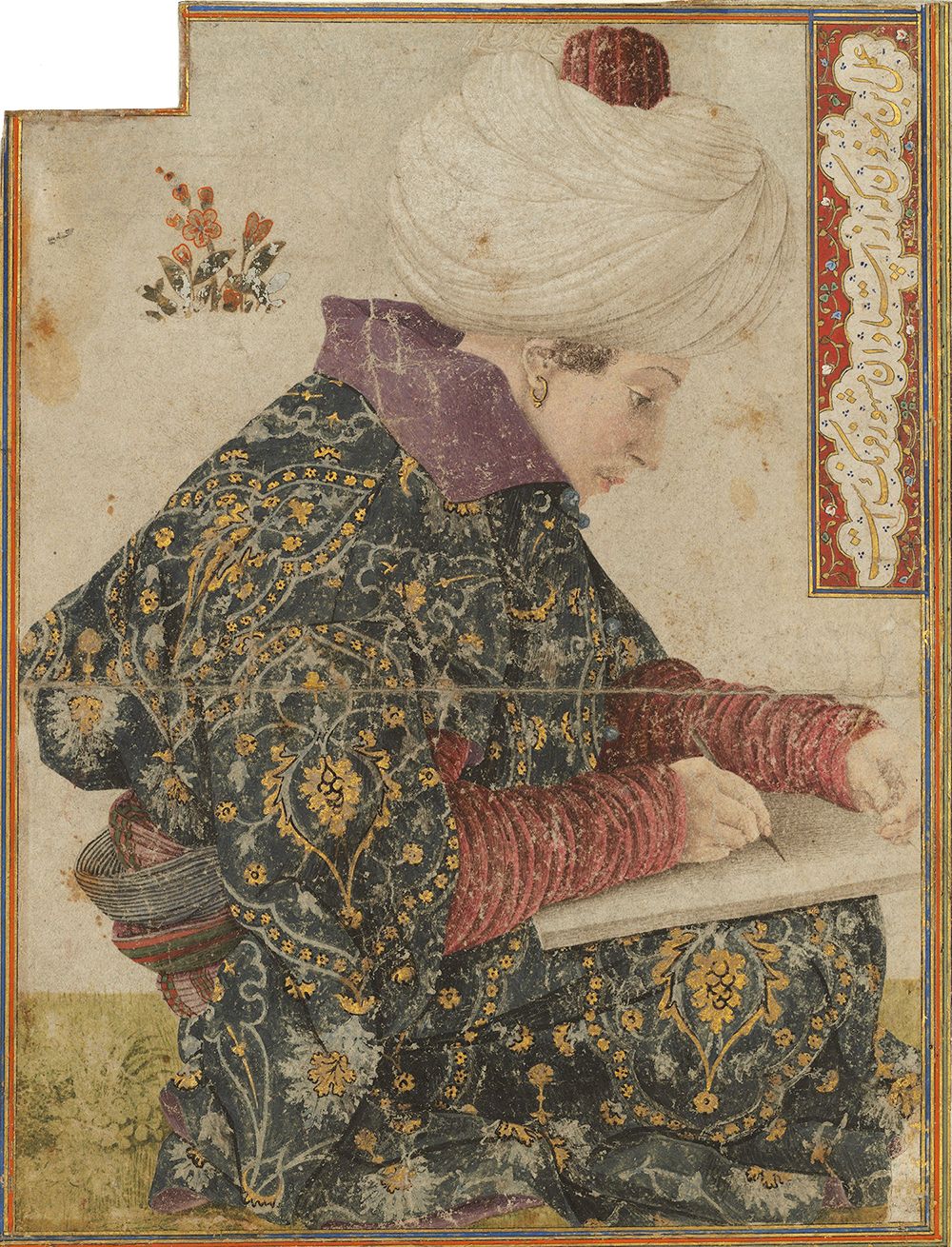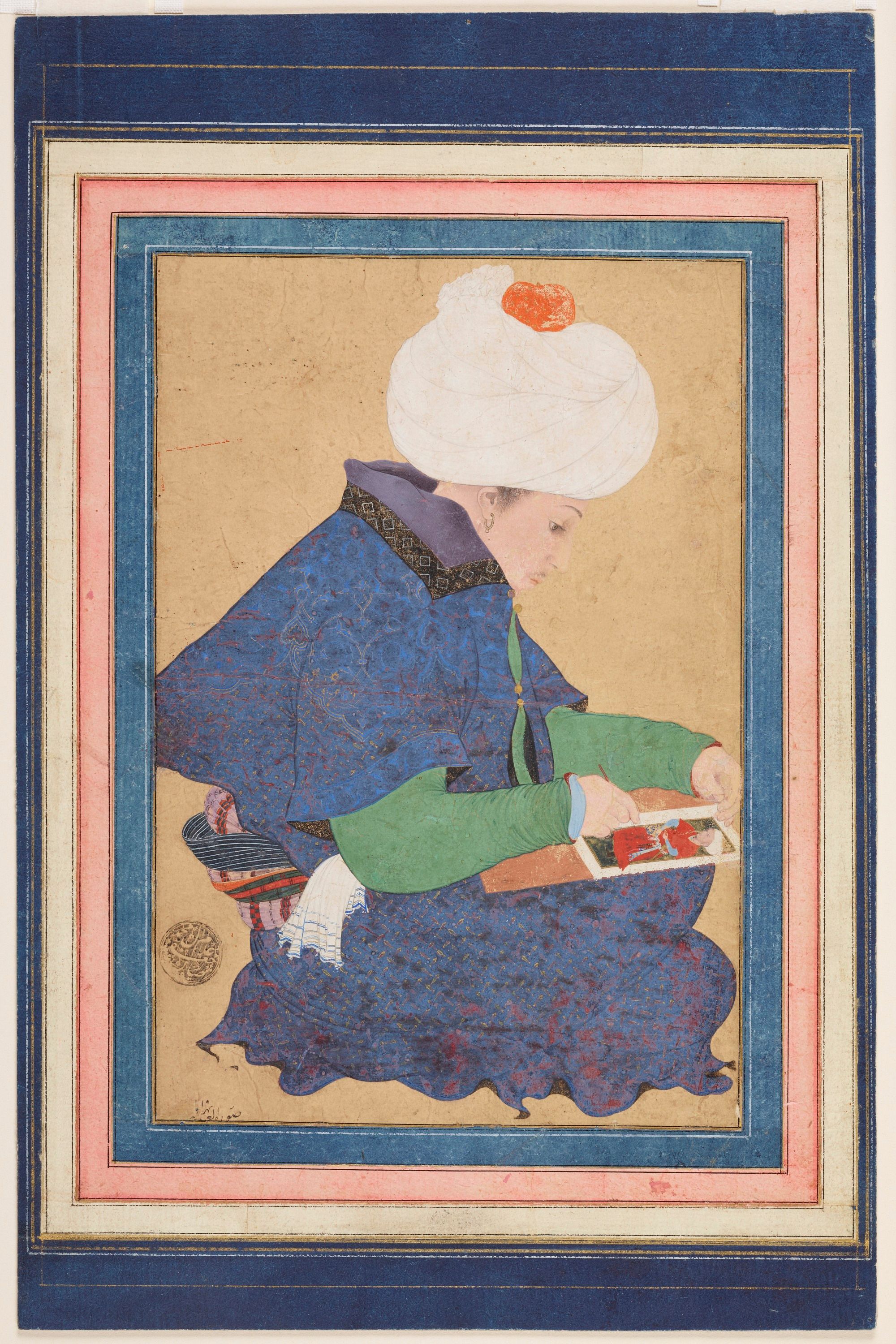More than Four Turtles: Global Renaissances in the Fifteenth Century (Part I)

Table of Contents
After spending two days setting up the big picture of the revival of Afroeurasia in the fifteenth century, we dive into the Renaissance, or Renaissances, on the third day. I use two different readings with the students and set up the class in a sort of a modified Harkness style discussions. With each reading, the students discuss what the author’s argument is, what evidence he uses to support the argument, and what is significant about the argument.
The first reading is a basic overview of the Renaissance from Strayer’s Ways of the World. The reading briefly covers the political revival of Europe in the fifteenth century before focusing on the Renaissance as a cultural revival. Strayer also juxtaposes these political and cultural revivals to similar political and cultural revivals in China in the fifteenth century, although my students don’t read that section. While briefly acknowledging some “Islamic” influence in the text, Strayer mostly presents the Renaissance as a European phenomenon that “celebrated and reclaimed a classical Greco-Roman tradition that earlier had been lost or obscured.” He frames the Renaissance as an artistic and literary that began to challenge a previous Christian view of the world. In the conclusion to the section, Strayer argues “Renaissance culture reflected the urban bustle and commercial preoccupations of Italian cities. Its secular elements challenged the otherworldliness of Christian culture, and its individualism signaled the dawning of a more capitalist economy of private entrepreneurs. A new Europe was in the making.” For Strayer, the Renaissance marks the beginning of a modernity defined in terms of secularism and capitalism. In many ways, Strayer’s interpretation of the Renaissance is an older, Eurocentric one with just a minimal nod to the idea that there may have been non-European influences and that a similar cultural movement was taking place in China. (Given how many different editions there are of Ways of the World, I haven’t included any page numbers with these quotes.)
One odd thing about Strayer is the complete lack of any Renaissance art in this section of the textbook. He spends most of the three pages mentioning many of the famous Renaissance artists and repeating how the movement was an artistic movement. If you get the edition with sources, there is a selection of paintings at the end of the chapter. At the same time, it just seems surprising that there are no paintings or photos of the sculpture in a three page reading about the Renaissance as an artistic movement. My students usually pick up on this absence.
After discussing Strayer’s interpretation of the Renaissance, we turn to an essay that I wrote: “Reimagining the Renaissance.” About half the essay is the same as my previous post “Globalizing the Renaissance,” but I have tweaked things a little for use with students. I will include the full text of the first half of my essay at the end of this post. Using scholarship from Jerry Brotton and a number of paintings and photographs, I present an interpretation of the Renaissance that frames it not as a uniquely European phenomenon, but “as more of a Mediterranean phenomenon in which Europeans, Arabs, Persians, and Turks interacted and influenced each other’s cultures. This cultural exchange was an example of the even global process of increasing economic and cultural integration across Afroeurasia and around the world in the fifteenth and sixteenth centuries.” In this way, the Renaissance can be seen as a cultural manifestation of the political and economic revival of Afroeurasia and the Afroeurasian world-system of the fifteenth century that I discussed in the previous post.
One of the things that students usually appreciate about this part of the essay is the way all the paintings and architecture being discussed are included in the essay. They can zoom in on different parts of Hans Holbein’s The Ambassadors and see for themselves the way in which the Asian influences on the Renaissance are “hiding in plain sight” as one of my students recently put it.
In the next post, I’ll discuss the contemporary Timurid Renaissance.
“Decentering the Renaissance”
Since the 1860 publication of Swiss historian Jacob Burckhardt’s The Civilization of the Renaissance in Italy, historians have debated the importance of the Renaissance in understanding the origins of the modern world. For Burckhardt, the period was one defined not just by beautiful art, but also by a spirit of individualism. He argued this individualism came to define European culture and marked the advent of modernity. Despite over a 150 years of subsequent historians questioning the merits of Burckhardt’s arguments and offering a wide range of alternative interpretations about the Renaissance, this period is still seen by many people around the world as a unique period in world history. The Wikipedia page for the Renaissance describes it as “a period in Europe, from the fourteenth to the seventeenth century, regarded as the cultural bridge between the Middle Ages and modern history.”
This glorification of the Renaissance highlights the pervasiveness of Eurocentric interpretations in history. The very idea of modernity is seen in singular terms and defined according to the alleged European value of individualism. Even if we put aside this tendency to project European individualism as a marker of global modernity, historians frequently still glorify the art of this period as unique, special, and somehow capturing the essence of Europe. In her Worldy Goods: A New History of the Renaissance, historian Lisa Jardine argued that Renaissance art marked a “golden age” of art:
The term ‘Renaissance’ prompts a litany of names of famous artists; it also evokes a particular kind of timeless achievement. This golden era bathed in perpetual Mediterranean sunlight was, we know, a period of rebirth (sublime, classical culture born again), a return to the glories of the age of political and cultural supremacy of Greece and Rome, after the diversionary interlude of the (local and parochial) middle ages. We tie in such a Renaissance with the recovery of the ancient languages, and our accounts of its reflowering inevitably centre on standards of achievement established early in the period at the symbolic geographical centre of classical art and learning, Italy. Hence we conventionally represent it as a ‘golden age restored,’ an age in which the characteristic mood was a kind of lofty self-confidence, spiritual arrogance, and an associated antique ideal of Aryan virtue or manliness. The paintings which we come determined to admire here are indisputably ‘Renaissance.’1
As world historians, we want to be careful about this tendency to highlight the supposed uniqueness of events in world history or to rely on simplistic explanations. Instead of viewing the Renaissance as somehow a uniquely European moment, we should attempt to view the Renaissance from a global perspective. The Renaissance highlighted how the emerging regional and global connections contributed to a flourishing of cultural exchanges and developments. In the words of historian Jerry Brotton, let us “situate the Renaissance within the wider international world” of the fifteenth century and understand how “trade, finance, commodities, patronage, imperial conflict, and the exchange with different culture were all key elements of the Renaissance.”2 In short, let us understand the Renaissance as part of a broader global, or at least Afroeurasian, phenomenon with parallels to developments taking place in the Middle East and Central Asia.
In 1533, the German Hans Holbein, while living in England, painted this portrait of two French diplomats at the English court. The painting is on display in the National Gallery in London and is frequently described as a quintessentially Renaissance painting. Brotton argues that:
The Ambassadors portrays two elegantly dressed men, surrounded by the paraphernalia of sixteenth century life. Holbein’s lovingly detailed, precise depiction of the world of these Renaissance men, who stare back at the viewer with a confident, but also questioning self-awareness, is an image that has arguably not been seen before in painting. Medieval art looks much more alien, as it lacks this powerfully self-conscious creation of individuality. Even if it is difficult to grasp the motivation for the range of emotions expressed in paintings like Holbein’s, it is still possible to identify with these emotions as recognizably ‘modern’. In other words, when we look at paintings like The Ambassadors, we are seeing the emergence of modern identity and individuality.3

Once we get beyond the depiction of the two individuals themselves, we notice the wide variety of items in the painting. The geometric pattern on the floor reflects the enthusiasm for geometric design in much of the architecture of the Arab world. The silk and velvet clothing worn by the two men would have been produced in Asia and come to Europe through trade links across the Mediterranean. The items on the table include two printed books, a lute, a globe, flutes, quadrants, sundials, and other navigational tools. These items symbolize the basic subjects of Humanism, the popular course of study during the Renaissance. While these items highlight another aspect of the Renaissance nature of this painting, many of these items also reflect earlier European cultural borrowings from Asia. The lute is a musical instrument based on the Arab oud. Printing presses with moveable type originally developed in China and showed up in Europe during the fifteenth century. The navigational technology mostly originated around the Indian Ocean and were spread into the Mediterranean by Arab and Jewish traders. These quintessentially Renaissance items reflect the economic and cultural links between the European and Muslim worlds. These connections not only helped cause the Renaissance, but they also influenced how wealthy and educated Europeans chose to present themselves as wealthy and educated.
In Gentile and Giovanni Bellini’s Saint Mark Preaching in Alexandria (1504–1507), the painting shows Saint Mark, the founder of the Christian Church in Alexandria in the middle of the first century and the patron saint of Venice, on the left in a pulpit, and he is preaching to the people of Alexandria. The men behind Mark are a group of Venetian noblemen. In front of him are a group of women dressed in white and wearing white veils across their faces. Around the women are men of various backgrounds talking to each other. Some of these men are Europeans, while others are Egyptian Mamluks, North African “Moors,” Ottomans, Persians, Ethiopians, and Tartars. It is possible to identify these different ethnicities by the use of standard European iconographic practices involving headgear, clothing, and skin color. In the background is the city of Alexandria. We can see the basilica, which mixes features of Hagia Sophia in Constantinople and the Church of San Marco in Venice. There are Egyptian style buildings, with wooden grilles and rugs hanging from the windows. In the background are a number of minarets, an ancient Egyptian obelisk, and camels and giraffes.

Despite Saint Mark having preached in the first century, the Bellinis placed him in a late fifteenth century context. This practice was common to many Renaissance era paintings. The Bellinis chose to present an ancient historical setting in terms that would have been easier for the average fifteenth century Italian to understand. It was also the economic links between Italians and the Muslims of the eastern Mediterranean that contributed to the origins of the Renaissance. This painting does not just link the late fifteenth century Venetians back to their first century patron saint, it also depicts those same fifteenth century Venetian traders surrounded by fifteenth century Muslim peoples with whom the Venetians regularly traded and in one of the main commercial centers of the eastern Mediterranean. The wealth derived from trade with the Muslim world was not just a cause of the Renaissance; the Bellini’s painting reflects how the Renaissance was an ongoing process of adoption and adaptation of ideas and materials from the Muslim world by Europeans (or at least Italians).
Although The Ambassadors and Saint Mark Preaching in Alexandria highlight the extent to which the Muslim world influenced Europeans, we can also begin to see how the Renaissance was an ongoing, two-way exchange between Europeans and Middle Easterners. During the two centuries, the fifteenth and sixteenth, associated with the Renaissance, the Ottoman Empire was also expanding. At the same time the Ottomans were fighting the Venetians and the Habsburgs, there was also significant cultural exchange between Ottomans and Europeans. In 1453, the Sultan Mehmet II conquered Constantinople. He restored the church of Hagia Sophia and transformed it into a mosque. He also hired Italian architects to assist in the construction of Topkapi Saray, a new imperial palace. Jerry Brotton makes clear how Topkapi came to symbolize the Renaissance:
The new international architectural idiom, drawing on classical, Islamic, and contemporary Italian styles, aimed to produce what one Ottoman commentator called ‘a palace that would outshine all and be more marvelous than all preceding palaces in looks, size, cost and gracefulness’. This international Renaissance style would also be recognizable to both Muslims and Christians alike, as confirmed by the Venetian ambassador, who praised the Topkapi as ‘the most beautiful, the most convenient, and most miraculous [palace] in the world’. Like so many Renaissance buildings and artifacts, the Topkapi was both an original creative act and a highly political object. The two impulses were inseparable – a defining feature of the Renaissance.4

Costanzo da Moysis’ Seated Scribe is from the late fifteenth century. (There is still some debate about the painter. Some art historians argue that Gentile Bellini painted it.) The man’s headdress or the Persian inscription in the upper right corner suggest that the artist was Muslim or at least spent time in the Muslim world. Both Costanzo and Bellini were actually fifteenth century Italian painters who had spent time at the Ottoman court. The painting’s design and detail reflect Chinese, Persian, and Ottoman artistic styles that were frequently found in miniature paintings that were common at this time in the Muslim world.

The final painting is Bihzâd’s Portrait of a Painter in Turkish Costume, also from the late fifteenth century. The visual similarities between this painting and Seated Scribe should be obvious. But while Seated Scribe was painted by an Italian painter trying to paint in a “Muslim” style, Bihzâd’s Portrait of a Painter in Turkish Costume was painted by a famous fifteenth century Persian painter who had also spent time at the Ottoman court after Constanzo. The obvious similarities between these two paintings suggest how European culture was also influencing the Muslim world in the fifteenth century. The aesthetic innovations of the Muslim world influenced Europeans, and the aesthetic innovations of Europe influenced Turks and Persians.
These four paintings and Topkapi Saray raise fundamental questions about the supposedly European nature of the Renaissance. Instead of thinking about this period as uniquely European, we can instead see the Renaissance as more of a Mediterranean phenomenon in which Europeans, Arabs, Persians, and Turks interacted and influenced each other’s cultures. This cultural exchange was an example of the even global process of increasing economic and cultural integration across Afroeurasia and around the world in the fifteenth and sixteenth centuries.
Liberating Narratives Newsletter
Join the newsletter to receive the latest updates in your inbox.



